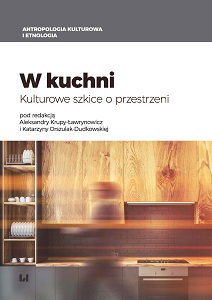Średniowieczna kuchnia „siermiężna” czy „wymyślna”. Uwagi o kulturze materialnej
Medieval Kitchen “Rough” or “Sophisticated” Remarks about Material Culture
Author(s): Anna Marciniak-Kajzer
Subject(s): Anthropology, Archaeology, Cultural history, Middle Ages
Published by: Wydawnictwo Uniwersytetu Łódzkiego
Keywords: Middle Ages; kitchen; archaeology; material culture
Summary/Abstract: Knowledge about cuisine and kitchen in the Middle Ages is full of myths and contradictions. The situation has improved in recent times, since cooking has become fashionable. The so-called food studies, contributed to the collaboration of historians, archeozoologists, archaeobotanists, anthropologists and archaeologists. In this article, however, the kitchen and its equipment are described from the archaeologist’s point of view. We do not always fully realize that our archaeological “potsherds” are relics of pots which were only of a small part of the kitchen equipment. Many objects were made of organic materials – mainly from wood, bast or bark, but also from leather or fabric. This type of equipment is rarely preserved in the ground. Most of the kitchen appliances discussed in the article are simple objects, made of cheap raw materials, so widely available. They were rarely described in sources – they were not subject to pledges, lawsuits and did not appear in wills. Sometimes we only find them in iconography. Hence we know that the image of medieval cuisine is very diverse and depended largely on the wealth of its owner. Certainly, it does not correspond to the still popular myths which see the Middle Ages as a “rough” era. The kitchens of the poor have changed little over the next few centuries. Kitchens of social elites also evolved slowly, but they always remained “fancy”.
Book: W kuchni. Kulturowe szkice o przestrzeni
- Page Range: 191-205
- Page Count: 15
- Publication Year: 2019
- Language: Polish
- Content File-PDF

